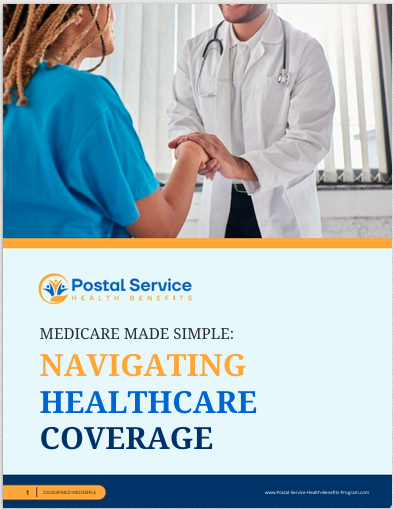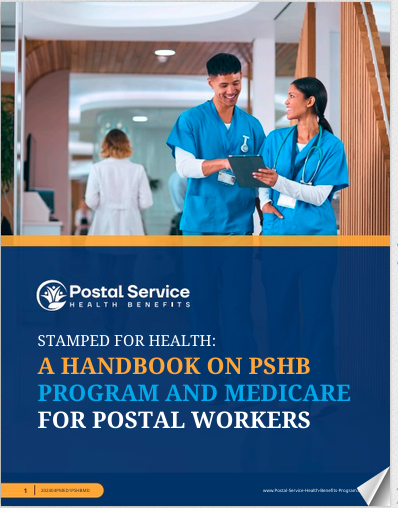Key Takeaways
-
Understanding PSHB premiums helps you make informed decisions about your healthcare costs and plan selection.
-
Your total out-of-pocket expenses depend on factors like deductibles, copayments, and whether you coordinate PSHB with Medicare.
What You Need to Know About PSHB Premiums in 2025
The Postal Service Health Benefits (PSHB) program is a major part of your healthcare as a USPS employee or retiree. With 2025 bringing changes to the program, it’s more important than ever to understand how premiums impact your overall healthcare costs. PSHB premiums are just one piece of the puzzle—they interact with deductibles, copays, and out-of-pocket maximums to determine what you’ll actually spend. Let’s break it down so you can plan effectively.
1. PSHB Premiums Are Based on Several Factors
PSHB premiums aren’t a one-size-fits-all cost. They depend on a few key elements:
-
Coverage Level: Whether you enroll in Self Only, Self Plus One, or Self and Family affects the premium you pay.
-
Government Contribution: The federal government covers a significant portion of the cost, but you’re responsible for the rest.
-
Plan Type: High-deductible health plans (HDHPs) typically have lower premiums, while low-deductible plans come with higher premiums but fewer upfront costs.
-
Medicare Enrollment: If you’re retired and also have Medicare, some PSHB plans reduce premiums or offer additional benefits to lower your expenses.
It’s crucial to compare plan brochures to see which options provide the best balance of cost and coverage for your needs.
2. How PSHB Premiums Compare to Overall Healthcare Costs
Premiums are just one part of your total healthcare spending. To get a complete picture, you need to consider:
-
Deductibles: The amount you must pay before your plan starts covering costs.
-
Copayments and Coinsurance: The fixed fees or percentage of costs you pay when receiving care.
-
Out-of-Pocket Maximums: The cap on what you’ll pay in a year before your plan covers 100% of eligible expenses.
A plan with a low premium might have higher out-of-pocket costs, while a higher premium plan could offer better coverage with fewer unexpected expenses. Make sure you factor in these additional costs when choosing a plan.
3. PSHB Premiums and Medicare Coordination
If you’re eligible for Medicare, your PSHB premiums may be affected by whether you enroll in Medicare Part B. Many PSHB plans integrate with Medicare, offering benefits such as:
-
Reduced Deductibles and Copays: Some PSHB plans waive or lower these costs when Medicare is your primary coverage.
-
Prescription Drug Savings: Medicare Part D coverage is included in PSHB for retirees, helping lower out-of-pocket costs for medications.
-
Potential Premium Adjustments: Some plans provide reimbursements or discounts on premiums for enrollees with Medicare.
If you’re retiring in 2025 or already retired, reviewing how your PSHB plan works with Medicare can save you significant money.
4. Premium Increases and How to Plan for Them
Like most healthcare programs, PSHB premiums typically rise over time due to factors like inflation, increased medical costs, and program adjustments. In 2025, USPS employees and retirees should be aware of:
-
Annual Premium Adjustments: Each year, premiums are reviewed and adjusted based on healthcare costs and plan offerings.
-
Changes in Employer Contributions: The federal government covers a large portion, but your share may still increase.
-
Impact of Plan Choice: Switching to a different PSHB plan can help you manage rising costs, especially if your healthcare needs have changed.
To avoid surprises, review Open Season materials carefully and anticipate potential increases in your budget.
5. How to Choose the Best PSHB Plan for Your Budget
Selecting a PSHB plan isn’t just about finding the lowest premium—it’s about choosing one that aligns with your healthcare needs and financial situation. Here’s what to consider:
-
Healthcare Utilization: If you visit doctors frequently or take multiple medications, a plan with higher premiums but lower out-of-pocket costs might be best.
-
Family Coverage Needs: If you’re covering a spouse or dependents, check whether a Self Plus One or Family plan offers better value.
-
Long-Term Cost Savings: Plans with higher premiums but additional benefits (like Medicare coordination) may save you money in the long run.
-
Network Coverage: Ensure your preferred doctors, hospitals, and pharmacies are in-network to avoid unexpected expenses.
Reviewing the plan details during Open Season will help you make an informed decision and avoid costly mistakes.
Understanding Your Healthcare Costs Beyond Premiums
While premiums are a key factor in your PSHB plan, they don’t tell the whole story. To manage your healthcare expenses effectively, take a holistic approach that considers deductibles, copays, out-of-pocket limits, and how Medicare integration can lower costs. Planning ahead and reviewing your options can help you avoid financial surprises and get the most out of your benefits.
To learn more about your PSHB options, speak with a licensed agent listed on this website who can guide you through your plan choices and ensure you’re getting the coverage that works best for you.







